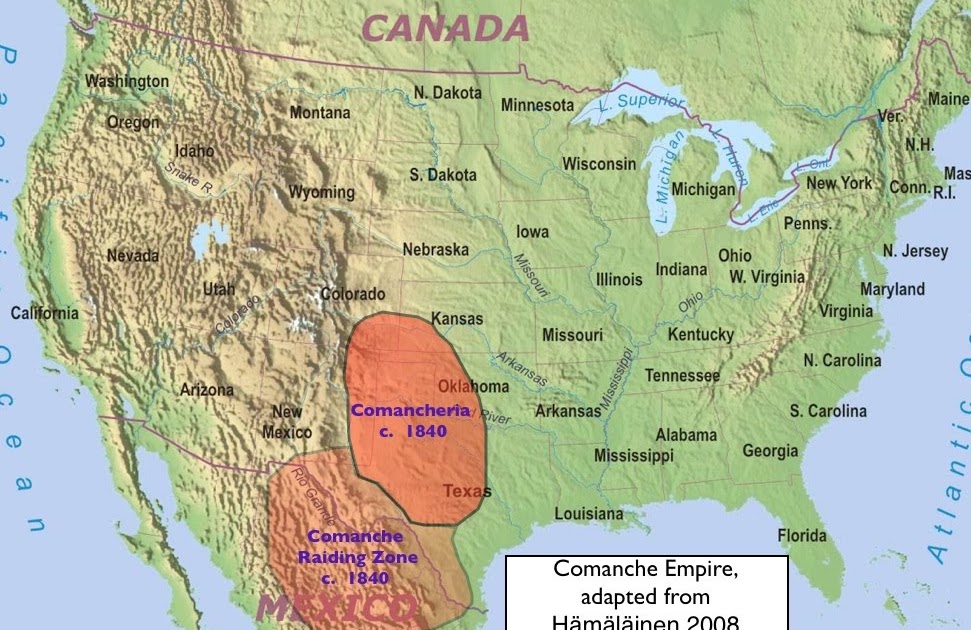
Figure 1.--Here is a depiction of the extent of Coamancheria about 1840 at the time of Texas independence. There of course were no actual boundaries at the time. Other maps suggest a larger territorial extent. |

|
The Comanche proved a far greater military challenge than most Native American tribes. Unlike the Eastern tribes in the United States, the Comanche acquired horses, capturing wild hoses from herds that became establish on the Great Plains. These were formed from domesticated Spanish horses in Mexico that had escaped into the wild. The possession of horses and their incredible horseman ship of the Comanche enabled them to maintain control over what amounted to be a vast empire on the southern plains. Other tribes could not match them and the Spanish found war with them too costly. As a result, few Mexicans found the inhospitable north populated with hostile tribes inviting. Comanchria existed at the time of the Lewis and Clarke Expedition (1803-04), but was south of the path followed. If they had entered Coamcheria, they may not have survived. The Americans had little contact with the Comanche until after the Civil War (1861-65). But the Spanish began having armed conflict with the Comanache in the 18th century. The first such encounter was reported (1706). The Spanish and in turn the Mexicans learned to essentially leave the Comanche alone, especially in Comancheria. But Comanche raiding parties forced them to man the frontier. For over 150 years, Comanche warriors dominated the region, and became known as 'the Lords of the Southern Plains', though they also shared parts of Comancheria to an extent with the Wichita, Kiowa, and Kiowa Apache and later, the southern Cheyenne and Arapaho. 【Meed and Smith, p.5 ff. 】
The Comanche were often in conflict with these tribes, but most such skirmishes went unrecorded. One such skirmish with the Apaches was recorded because the Spanish were involved--Sierra Blanca (April 1787).
The Spanish and Mexicans generally stayed out of Comancheria, but there were encounters in which the Comanche generally prevailed.
There were interactions with expanding Spanish and later Mexican settlements. Comanche bands staged raids on isolated settlements. These were vulnerable targets defended only by family members and a few ranch hands.
The Comanche Wars peaked in the 1840s, perhaps because the Mexicans were weakened by war with the United States. The Comanche conducted large-scale raids deep into Mexico, in some cases hundreds of mile from Comancheria. They also wared against the suddenly independent Texans. Independence meant that there was no longer any restriction on immigration into Texas.
Spanish traders offered manufactured goods and ransomed kidnapped people, usually women and children. There were also inter-marriages--men known as Comancheros. The Comanche conducted merciless warfare. They ere especially brutal toward the Tonkawas, a small tribe which often allied with the Spanish/Mexicans or Texans
Raids continued into the period of Texan independence when family farms became more common. According to Texans, raids were continuous and unbearable. During Texas independence (1836-45), dealing with the Comanche became the main job of the famed Texas rangers. But annexation brought the power of the U.S. Army into the picture.
Repeating fire arms were the down fall of the Comanche. Coincidentally, Colt began manufacturing its revolver incidentally in the same year the Republic of Texas was proclaimed (1836). The Winchester repeating rifle came into existence a few years later. The first such rifle appeared (1848). It was fragile and undependable. Smith and Wesson bought the patent (1855). Benjamin Henry solved the major remaining problems with an improved cartridge and the Henry rifle was used by some Federal units during the Civil War--that 'damned Yankee rifle'. After the Civil War, Oliver Winchester improved on the Henry rifle and began marketing the Winchester Repeating Rifle. (1866). This was a technological challenge that even with their matchless horsemanship the Comanche cold not over come. There ranks we also thinned by European diseases. The Comanche power fell as epidemics of cholera and smallpox caused thousands of deaths in a tribe that at its peak was only about 20,000 members. .
After the Mexican-American War (1846-48), the U.S. Cavalry erected a defensive line of forts along the 'frontier' meaning the borderlands between the Comancheria and Texan settlements in eastern Texas. They also tried to separate pacified Choctaw/Chickasaw settlement. The Red River Valley became an important par of the frontier with camps Johnston, Worth and Cooper. Other important forts were Arbuckle, Belknap and Phantom Hill. The soldiers stationed at the forts included future Civil War luminaries like Robert E. Lee and William Tecumseh Sherman. The Comanche avoided the forts where they would face well-armed soldiers who outgunned them. They would attack isolated and difficult to protect farms and ranches with only a few few, poorly armed defenders. Texas authorities would accused the U.S. government of not protecting them from Indians in the state secession document (1861). For the Comanche, defeat came in the canyon lands of the Texas Panhandle. 【Hämäläinen】 The last remaining bands of Comanche warriors surrendered to the United States Calvary Army armed with repeating rifles (1875). A few few isolated Comanche continued to fight on such as the Buffalo Hunters' War (1876 and 1877).
Hämäläinen, Pekka. Comanche Empire.
Meed, Douglas V. and Jonathan Smith (illustrator). Comanche 1800-74 (Oxford: Osprey, 2003).
Navigate the Children in History Website:
[Return to the Main Comanche page]
[Return to the Main America stole northern Mexico thesis page]
[About Us]
[Introduction]
[Biographies]
[Chronology]
[Climatology]
[Clothing]
[Disease and Health]
[Economics]
[Freedom]
[Geography]
[History]
[Human Nature]
[Ideology]
[Law]
[Nationalism]
[Presidents]
[Religion]
[Royalty]
[Science]
[Social Class]
[Bibliographies]
[Contributions]
[FAQs]
[Glossaries]
[Images]
[Links]
[Registration]
[Tools]
[Children in History Home]
Navigate the CIH ethnic pages:
[Return to the Main Plains Tribes page]
[Return to the Nain North Americn tribl page]
[Return to the Main ethnic page]
[German]
[Greek]
[Irish]
[Scottish]
Navigate the CIH Native American pages:
[Return to the Main Native American cultural area page]
[Return to the Main Native American ethnic page]
[Return to the Main Native American page]
[Ethnic]
[Dance]
